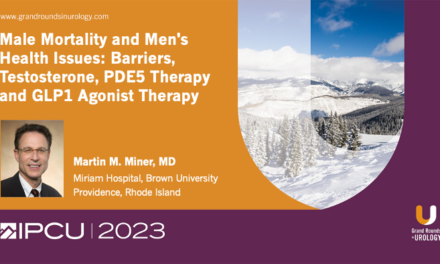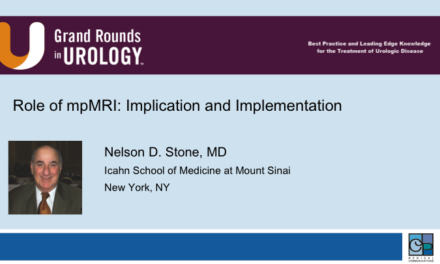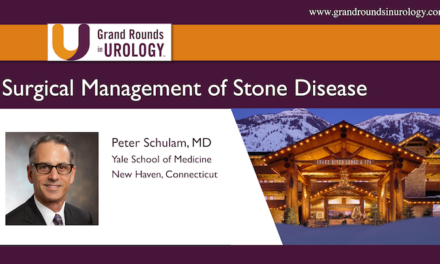Michael E. Albo, MD, FACS, presented “Treating BPH: Comparing Treatment Modalities” during the 29th Annual Perspectives in Urology: Point-Counterpoint, on November 18, 2021, in Coronado Island, San Diego, California.
How to cite: Albo, Michael E. “Treating BPH: Comparing Treatment Modalities.” November 18, 2021. Accessed Apr 2024. https://grandroundsinurology.com/treating-bph-comparing-treatment-modalities/
Treating BPH: Comparing Treatment Modalities
Michael E. Albo, MD, Vice Chair of the Department of Urology at the University of California, San Diego, compares the efficacy, safety, and considerations for a variety of treatment options—both traditional surgical and newer, minimally-invasive therapies—for patients with benign prostatic hyperplasia (BPH) causing lower urinary tract symptoms (LUTS). He begins by outlining the surgical management of LUTS attributed to BPH before discussing the goals and selection of treatment. He explains the patient and urologist perspectives in terms of evaluating minimally invasive therapies before summarizing the various treatment options as a whole. The first are resection treatments, including transurethral resection of the prostate (TURP) (which Dr. Albo calls “the gold standard”) and transurethral incision of the prostate (TUIP). Next he describes enucleation technologies, including simple prostatectomy, laser enucleation of the prostate (using holmium [HoLEP] or thulium [ThuLEP] lasers), and bipolar enucleation. Dr. Albo explains that while simple prostatectomy should be considered only for patients with large to very large prostates, laser enucleation options are size-independent options for the treatment of LUTs/BPH; additionally, the HoLEP and ThuLEP options have more favorable perioperative safety and he advises these be considered as treatment options in patients at higher risk of bleeding. Dr. Albo then addresses vaporization procedures, including bipolar transurethral vaporization of the prostate (TUVP) and photoselective laser vaporization of the prostate (PVP), explaining that PVP is likely safe for patients on anticoagulants. At this juncture he turns to the minimally-invasive prostatic urethral lift (PUL), citing studies showing this is less effective than TURP but with similar quality of life improvements. Dr. Albo makes the point that trials need to better evaluate minimally invasive interventions in terms of whether patients are able to discontinue medication and therefore whether that intervention can be considered successful. He discusses water vapor thermal therapy (WVTT), citing data supporting the preservation of erectile and ejaculatory function and five-year data showing sustained changes in International Prostate Symptom Score (IPSS) and Qmax. Robotic waterjet treatment (RWT) has been shown to be effective and safe, with the main drawback being bleeding; Dr. Albo predicts that, while more needs to be learned as far as RWT for larger prostates, this procedure could be game-changing. He mentions two additional procedures, transurethral microwave therapy (TUMT) and prostate artery embolization (PAE) (which currently is not recommended outside the context of clinical trials) as well as an investigational treatment with nitinol struts to remodel the bladder neck. He concludes by asserting that the field has come a long way in terms of the sophistication of the surgical treatment algorithm, emphasizing the importance of a discussion with the patient in terms of side effects, the availability of technology at the institution, and the surgeon’s skill level in the decision-making process.
About the 29th Annual Perspectives in Urology: Point Counterpoint conference:
Presented by Program Chair and Grand Rounds in Urology Editor-in-Chief E. David Crawford, MD, this conference brought together leading experts in urology, medical oncology, and radiation oncology to discuss and debate the latest topics in genitourinary cancers, primarily prostate cancer and bladder cancer. This interactive conference offered topical lectures, pro/con debates, interesting-case presentations, interactive panel discussions, and interactive audience and faculty networking.




